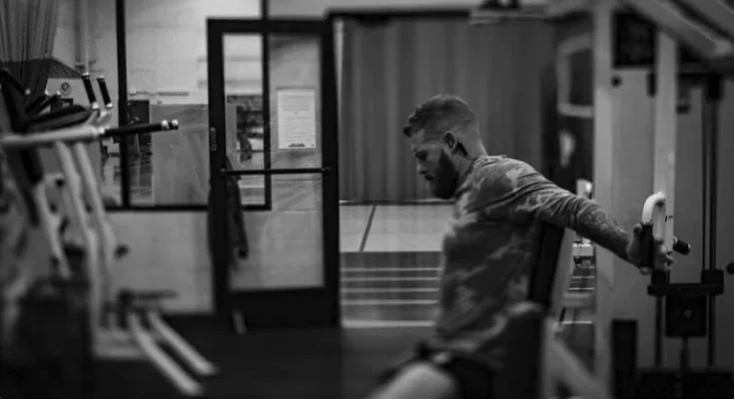Fitness is not about attaining a perfect body as most people may think it’s more about the body getting to that stage where it can handle all the tasks necessary in people’s daily lives. Functional Gym Workouts They have become popular largely because of their relation to fitness for work output This functional Gym workouts are performed in gyms. Functional Gym Workouts This guide will define functional Gym Workouts and outline a training program set to enhance actual world performance.
What is Functional Fitness?
Functional fitness is all about the movements that are close to real life scenarios and thus the body is exercised in a manner that will be of real time use. Unlike exercises that target isolated muscles in a contained region of the body, functional training focuses on multi joint movements, the foundation of the essential functional movements, Stability and mobility, an efficient balance of fitness attributes, and a highly capable body.
The Fundamental Specifications of Functional Fitness
- Multi-Joint Movements: Movements that require more than one muscle and joint and imitates its basic functions.
- Core Strength : The abdominal muscles are necessary for driving all the movement actions and they also aid in stability.
- Balance and Flexibility : The principle of functional fitness is to target muscles and joints more or less in equal proportion.
- Progressive Overload : In this case, gradual step up applies well in that the level of resistance has to be constantly up and this can only be done gradually in order to maintain a gradual constant progress in the strength and endurance of a particular muscle group.
- Variety in Movements : This means that when different exercises are included, the body is worked over in as many ways as it can be.
Working out at Gym for Functional purpose
1. Squats
- How to Perform: Start with your feet a little farther than shoulder width. Squash your body downwards into a crouched position by bending your knees as well as pulling your hips down. That’s the end for the first rope skipping movement, now go back to the initial position.
- Benefits: Strengthens the leg muscles and In terms of biomechanics, standing, sitting, and lifting become improved.
2. Deadlifts
- How to Perform: Standing shoulder width apart bend at the waist to grip the barbell with both hands with your back straight. Squat down and then push the weight up by squeezing the hips and the knees.
- Benefits: Improves SQM, avoids reinjury of lower back, provide the body with lower back and core muscles strength.
3. Lunges
- How to Perform : Swing one leg forward and follow it by bending both knees making them form a ninety degrees angle. Go back to the first position and switch in legs.
- Benefits : Enhances stability, strength and mobility that will be of value if the client is undertaking tasks such as climbing up steps or walking on ramps or slopes.
4. Push-Ups
- How to Perform : Begin in a plank position. Bend your upper body down towards the ground with your elbows in close and then reverse the process.
- Benefits : Helps to make the chest, shoulder and the arm muscles firm for pulling and pushing tasks or activities.
5. Planks
- How to Perform: First, lay flat on your stomach, and putting your palms perpendicular to your shoulders, flexed on the floor, keep your body straight from head to the heels.
- Benefits: Strengthens the very central part of our body helping in correct positioning and lessening pain in the back.
6. Farmer’s Walk
- How to Perform : Take a dumbbell or a kettlebell in each hand and walk a specific course with correct form.
- Benefits: It increases the grip strength and at the same time improves on the overall carrying capacity of an article or product.
7. Pull-Ups
- How to Perform : Pull with your palms facing down towards a bar and then grab it with your hand. I suggest taking your body over until your chin is over the bar of the parallel bars, followed by lowering your body back down.
- Benefits: Develops spine extensor and flexor muscles and biceps brachii which are important muscles of the back and arms for lifting and pulling jobs respectively.
8. Medicine Ball Slams
How to Perform : Take a big medicine ball and put it above your head and then bend your knees and squat and then fling it onto the ground. Let it bounce and do it again Special thanks to Anne for helping me catch it on the rebound and repeat.
- Benefits : Develops powerful and coordinated actions for group focused activities.
Signing the Importance of Functional Fitness
Functional training concentrates on getting your body ready and able to handle the everyday life experiences, improving your physical Endeavours along with decreasing your probability of sustaining an injury. Here’s how it impacts daily life:
- Improved Posture : Toughens core muscles that help maintain the right posture and causes less strain to aching muscles for those who sit frequently.
- Increased Mobility: Improves durability and the ability of joint to move, allowing one to bend easily or to reach for an object.
- Reduced Injury Risk: Helps to develop stabilizing muscles to act as a buffer for joints as well as spine whenever engaging in high intensive activities.
- Better Balance : The muscles become stronger and more balanced so clients are less inclined to have falls or accidents.
- Enhanced Energy Levels : Gross motor movements activate energy and endurance at work.
Functional Training Tools
Adding the right equipment can amplify the effectiveness of functional workouts:
- Kettlebells: Suitable for every active movement such as swinging motion.
- Resistance Bands: Fitness exercise should be able to offer variable levels of resistance in terms of strength and flexibility.
- Medicine Balls: Suitable for its usage in power based workouts.
- TRX Suspension Trainers : Make it possible to incorporate bodyweight excises engaging a number of muscles in the body.
- Stability Balls : Improve the harmony and strength in your middle area and lower back.
How to Take Exercise Frequency, Separated by Function, More Personal
To maximize results, tailor your workout plan based on individual goals and lifestyle:
- Set Specific Goals : Determine which category of exercise it belongs to or whether it falls under strength, flexibility or endurance training.
- Functional Assessment: Determine which everyday tasks need to be enhanced and therefore pay attention to the corresponding exercises.
- Track Progress: Record progress in strength, flexibility, and mobility on a regular basis.
- Seek Guidance: Ask a fitness expert in case of any specific concern or disability.
Conclusion
It is not just cosmetic to get a functional gym workout to sculpt a body ready for any task. Functional fitness involves the use of multi-joint movements; work on balance flexibility; and the key muscles areas, hence increasing day-to-day performance besides protecting the body from injuries. From carrying a pack from the supermarket to going up stairs or even when participating in sporting activities, functional fitness training strategy lets you be strong and coordinate yourself appropriately. Sign up to this all encompassing concept of fitness and change your life, for the better.




